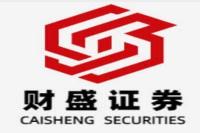Unlocking China's Market: A Deep Dive into the Revised Foreign Investment Encouragement Catalog (2023)
Meta Description: Navigating the updated 2023 Chinese Foreign Investment Encouragement Catalog: Expert analysis of key changes, regional incentives, and implications for foreign investors looking to tap into China's booming economy. Understand the nuances of encouraged industries, restrictions, and the pathway to successful investment.
This isn't just another news update on the revised Foreign Investment Encouragement Catalog; it's your roadmap to success in the dynamic Chinese market. Forget dry legal jargon – we're peeling back the layers to reveal the real opportunities and challenges awaiting foreign businesses eager to invest in China. Imagine this: you're at the helm of a burgeoning enterprise, poised to break into one of the world's largest and most lucrative economies. But the regulatory landscape can feel like a maze, right? That's where we come in. We've spent years navigating this terrain, building relationships with key players, and witnessing firsthand the triumphs and pitfalls of foreign investment in China. This isn't theoretical; it's based on real-world experience, providing actionable insights that go beyond the surface-level headlines. We’ll dissect the intricacies of the updated catalog, examining the subtle shifts in policy, highlighting lucrative sectors, and warning you about potential roadblocks. Prepare to gain a competitive edge, armed with the knowledge to make informed decisions and maximize your return on investment. This isn't just about understanding the rules; it's about understanding the game. Are you ready to play?
National Encouraged Industries: A Sector-by-Sector Breakdown
The newly revised catalog, a crucial document for anyone considering foreign direct investment (FDI) in China, presents a nuanced picture of opportunities and restrictions. Let's delve into the details, starting with the national encouraged industries. This isn’t a simple “yes” or “no” list; understanding the why behind the classifications is crucial for strategic decision-making. For example, the continued emphasis on high-tech sectors like advanced manufacturing and renewable energy reflects China's ongoing commitment to technological self-reliance and environmental sustainability. But it's not just about innovation; it’s also about aligning with China's broader economic development goals.
The catalog isn't just a static document; it's a dynamic reflection of China's economic priorities. Think of it as a living organism, constantly evolving to meet the needs of a rapidly changing global landscape. This means staying informed is paramount – a single missed update could mean the difference between success and failure. We'll break down the key sectors into manageable chunks, providing a clear picture of the opportunities and challenges within each:
Table 1: Key Sectors in the National Encouraged Catalog
| Sector | Key Opportunities | Potential Challenges |
|-----------------------------|---------------------------------------------------|------------------------------------------------------|
| High-Tech Manufacturing | Access to a massive domestic market, government subsidies, skilled workforce (in certain areas) | Intense competition, intellectual property protection concerns, regulatory hurdles |
| Renewable Energy | Growing demand, substantial government support, environmental benefits | Intermittency challenges, grid integration issues, technological advancements needed |
| Modern Services | Expanding middle class, rising consumer spending, deregulation in certain sectors | Competition from domestic firms, regulatory uncertainty in some areas |
| Advanced Information Tech | Huge market potential, government support for digital economy development | Data security concerns, potential for increased regulation, talent acquisition |
Understanding the Nuances: The catalog isn’t solely about listing industries; it's about understanding the specific activities within those industries that are encouraged. A cursory glance might show "manufacturing" as encouraged, but a deeper dive reveals that it's often specific types of manufacturing – those leveraging advanced technologies, promoting innovation, or focusing on high-value-added products – that receive the most favorable treatment. This requires detailed analysis and a thorough understanding of the regulatory framework.
Think of it like this: It's not enough to simply want to open a restaurant in China; you need to understand the specific regulations around food safety, licensing, and location. Similarly, understanding the nuances of the catalog is crucial for success.
Central and Western Regions: A Focus on Regional Development
The catalog also features a dedicated section focusing on the central and western regions of China. This strategic initiative aims to attract foreign investment to these areas, fostering balanced regional development and reducing economic disparities. The incentives offered in these regions often include tax breaks, land subsidies, and streamlined approval processes – a tempting proposition for investors looking for a competitive edge.
However, it’s important to weigh these incentives against potential challenges. Infrastructure development might be less advanced in some areas, and access to skilled labor might be more limited compared to coastal regions. Thorough due diligence is critical before making any investment decisions.
Navigating the Complexities: Restrictions and Considerations
While the catalog highlights encouraged industries, it's equally important to be aware of industries subject to restrictions or prohibitions. This isn't a punitive measure; it's often a reflection of national security concerns, environmental protection regulations, or the need to protect domestic industries. Ignoring these restrictions can lead to significant legal and financial repercussions. Always consult with legal professionals specializing in Chinese investment law to ensure compliance.
Furthermore, even within encouraged sectors, there are often specific conditions and requirements that must be met. These can include technology transfer agreements, employment quotas for local workers, and environmental impact assessments. Failing to meet these requirements could jeopardize the benefits associated with being designated as an encouraged industry.
Frequently Asked Questions (FAQ)
Q1: What is the significance of the updated Foreign Investment Encouragement Catalog?
A1: The updated catalog provides a clear signal of China's economic priorities and investment policies for foreign investors. It significantly influences investment decisions and shapes the landscape of FDI in China.
Q2: How does the catalog differ from previous versions?
A2: The most recent version reflects China's evolving economic goals, placing greater emphasis on high-tech industries, renewable energy, and modern services. There may be subtle shifts in specific encouraged activities within existing sectors, necessitating careful review.
Q3: What are the key benefits of investing in an encouraged industry?
A3: Benefits can include tax incentives, streamlined approval processes, preferential access to land and resources, and government support programs.
Q4: Are there any risks associated with investing in China?
A4: Yes, potential risks include regulatory changes, intellectual property protection concerns, competition from domestic firms, and potential political and economic uncertainties. Due diligence is crucial.
Q5: How can I ensure compliance with the catalog and relevant regulations?
A5: Consult with legal and financial professionals experienced in Chinese investment law. Thorough due diligence and ongoing monitoring are essential.
Q6: Where can I find the complete text of the catalog?
A6: The official text is usually published on the websites of the National Development and Reform Commission (NDRC) and the Ministry of Commerce (MOFCOM). Always refer to the official source for the most accurate and up-to-date information.
Conclusion: A Strategic Investment Opportunity
The revised Foreign Investment Encouragement Catalog presents both significant opportunities and challenges for foreign investors. By carefully navigating the complexities of this document and understanding the nuances of the Chinese regulatory environment, foreign businesses can unlock substantial growth potential within one of the world's largest and most dynamic economies. Remember, successful investment isn't just about understanding the rules; it's about understanding the bigger picture. This requires staying informed, conducting thorough due diligence, and engaging experienced professionals to guide you through this complex yet rewarding journey. The Chinese market is ripe for those willing to invest the time and effort to understand its intricacies. Are you ready to seize the opportunity?



